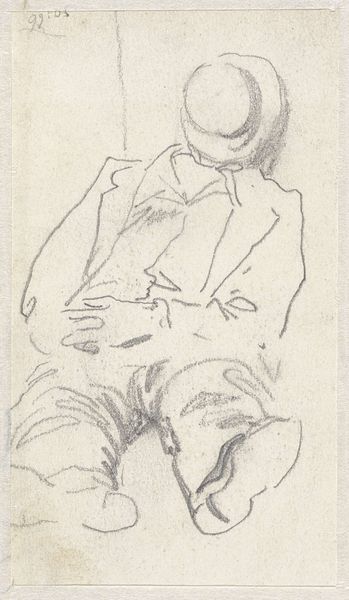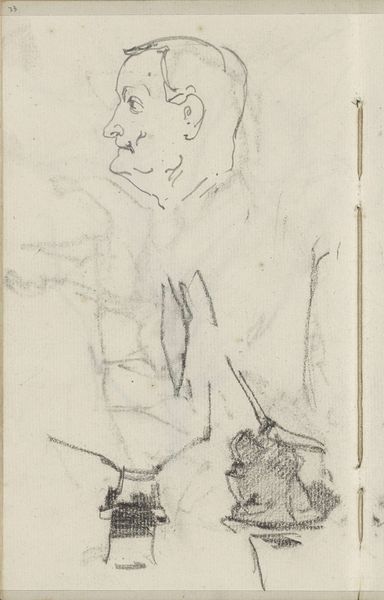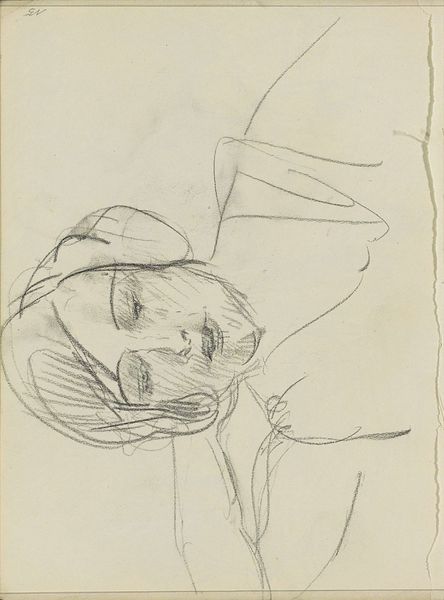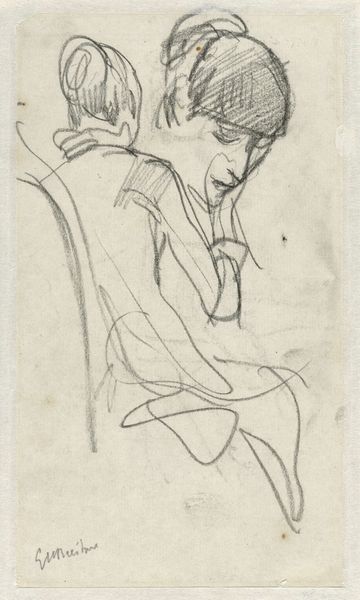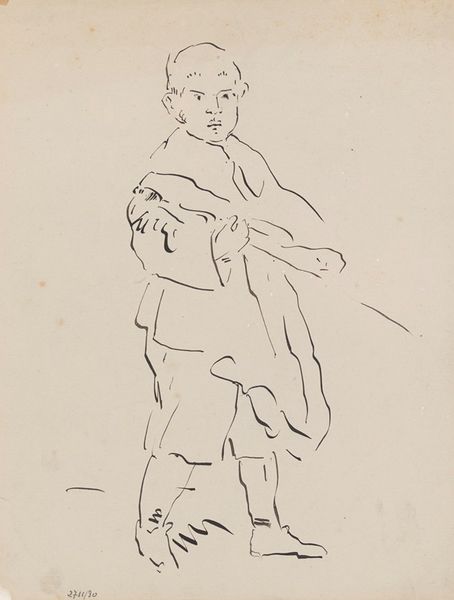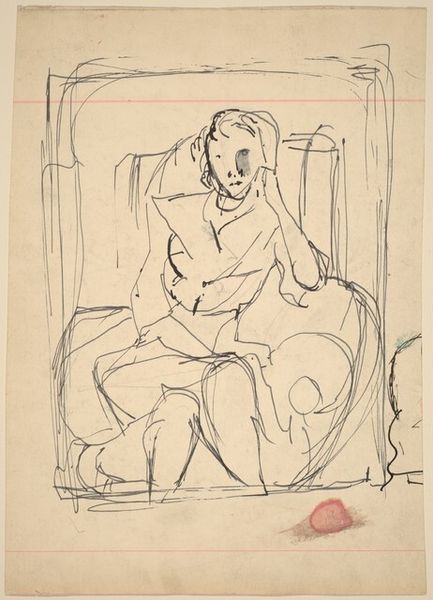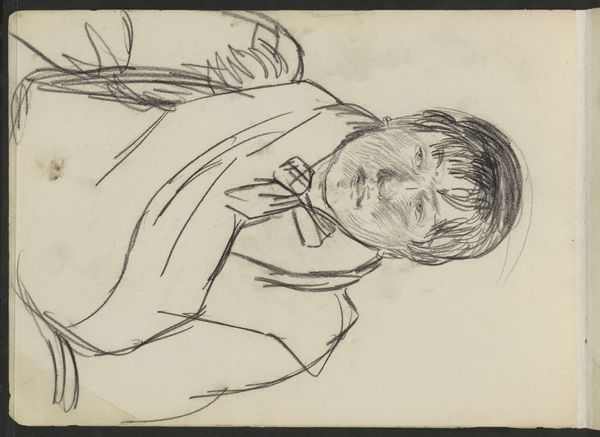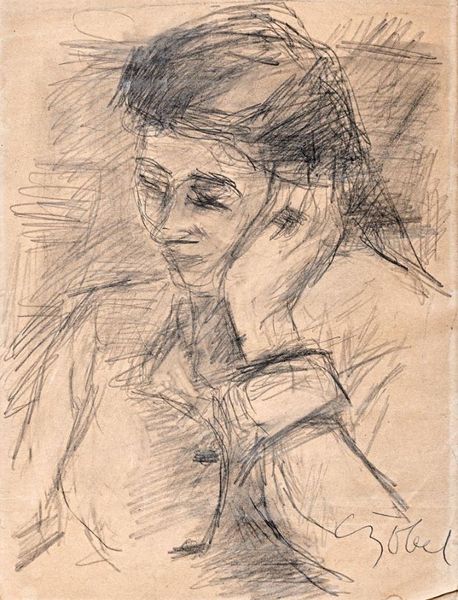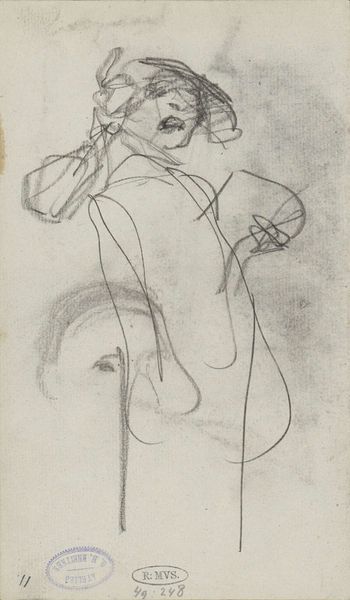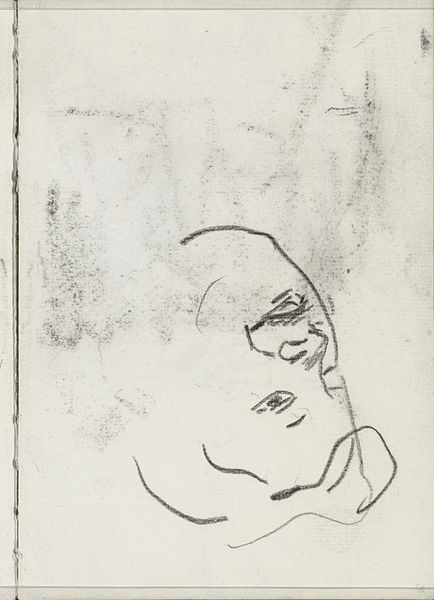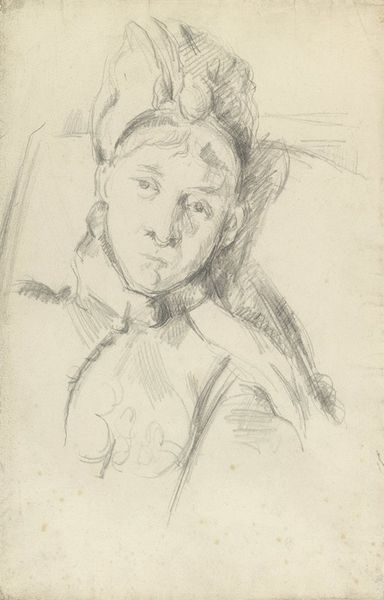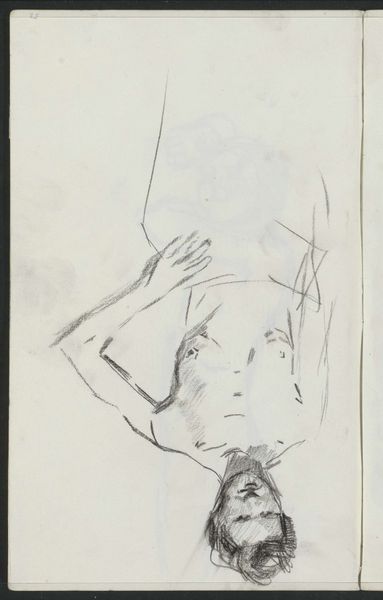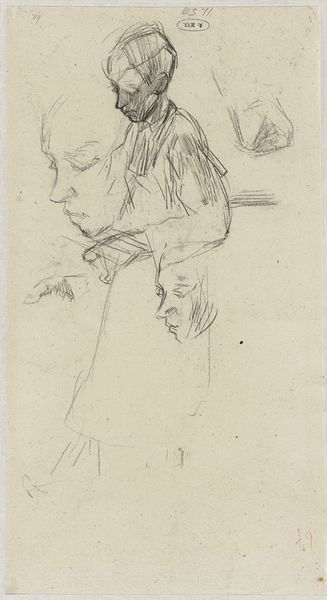
Dimensions: height 202 mm, width 131 mm
Copyright: Rijks Museum: Open Domain
Curator: What we're looking at here is George Hendrik Breitner's "Zittende vrouw met kat", or "Seated Woman with Cat," a graphite and pencil drawing made around 1912, now housed in the Rijksmuseum. Editor: The looseness of the sketch is really striking. It feels so immediate, as if we've caught the artist mid-thought, just as the idea was forming. Curator: Breitner's focus on capturing fleeting moments owes a lot to Impressionism, but he filtered it through his own experiences of urban life, particularly in Amsterdam. Here, it’s a quiet domestic scene, though quite intimate for a genre painting. Editor: You know, that's interesting. I hadn't immediately placed this as a “genre painting.” The rough texture of the paper, combined with the almost unfinished quality, emphasizes the raw materiality and the artist's hand. I wonder about the paper itself—where did Breitner get it? Was it cheap and readily available, or something he sought out specifically? Curator: The sketch aesthetic suggests a focus more on quickly capturing the moment. The prevalence of affordable sketching materials during this period, however, allowed more artists to document life beyond formal portraiture, shaping perceptions and social mores of the time through everyday imagery. Editor: Exactly! And let’s not forget about the cat! Its posture is so stiff, almost comical. It's interesting how Breitner prioritizes certain lines and details. What kind of graphite or pencil would he use? Curator: Well, the range of shades suggests he used a variety of pencil hardnesses to create depth and shadow. And despite the seemingly casual nature of the drawing, the woman's gaze meets ours directly, almost confrontational given her nudity. This draws our focus onto issues around objectification and visibility in art. How are such figures viewed, exhibited, and discussed in the grand scheme of the art market and museums? Editor: A compelling thought—the gaze in art! Looking closely, the varying thickness of the lines seems almost to model and give her substance—emphasizing presence over objectification. Curator: It’s certainly a complex interplay! Thinking about Breitner's world, it reflects a growing bourgeois class developing distinct cultural interests. Thanks to advances in production technology, more ordinary people than ever before could now participate in art production, changing society, and forcing our art institutions to deal with those ripples of societal change. Editor: Precisely. It brings such immediacy, allowing the modern viewer an unusually intimate engagement with a historical subject, but also an appreciation of a work made by a person, with whatever pencils were on hand at the time.
Comments
No comments
Be the first to comment and join the conversation on the ultimate creative platform.
